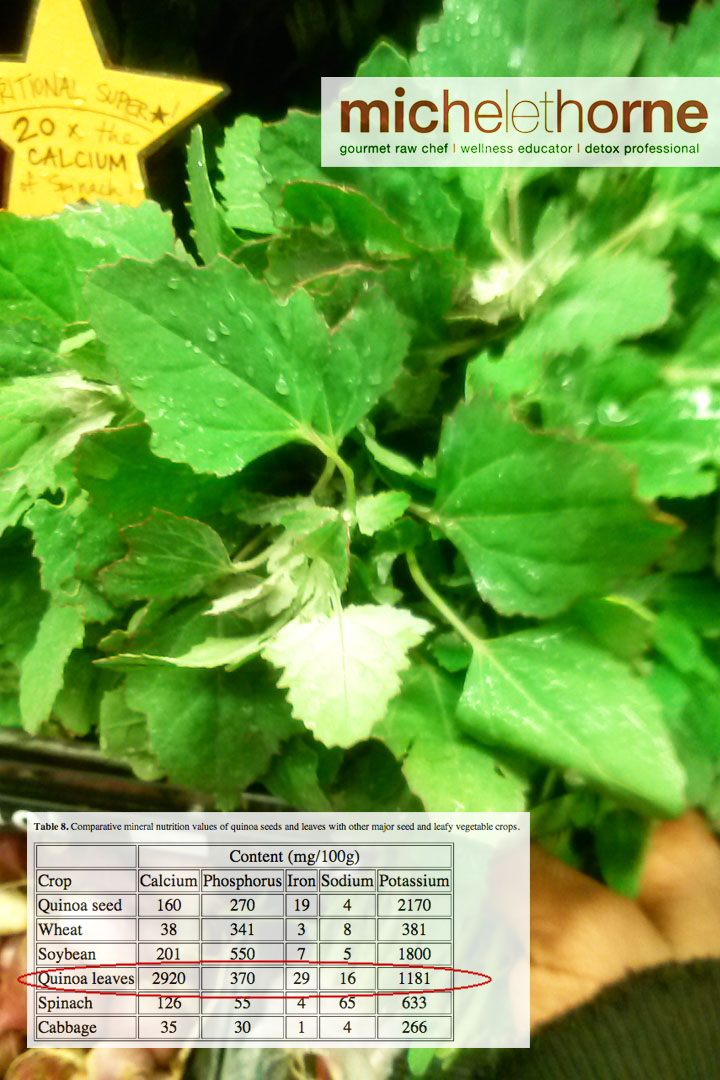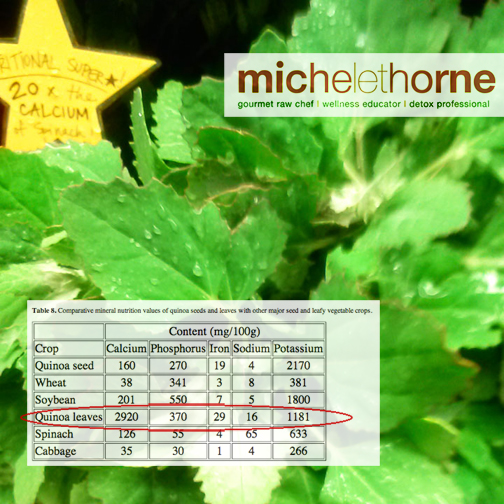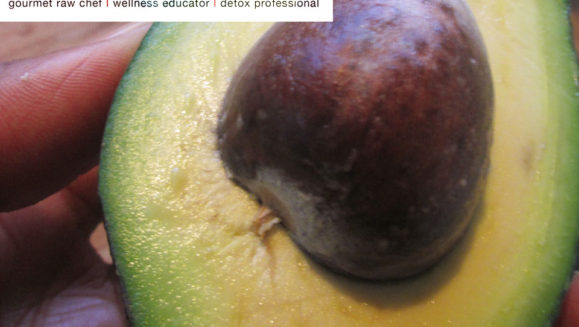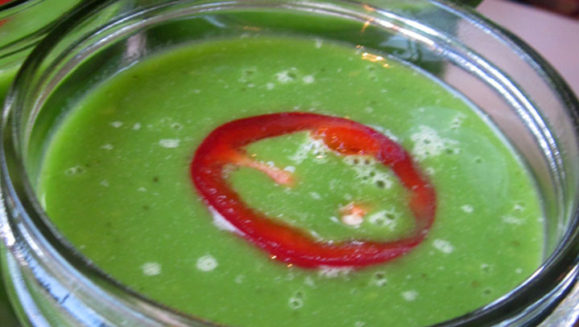I was immediately skeptical that these delicate greens could have so much more calcium than spinach, and I was completely smitten when I discovered that quinoa greens are also a really great vegetable source of the mineral iron. The taste of these raw greens is very much like spinach or chard, only less bitter. They have a nutty warm flavor that tastes like a combination of spinach and quinoa all in one. The leaves are tender and are much smaller in size than spinach leaves and they resemble cilantro leaves a little too, but this hearty green can add a nutritionally versatile punch to your table. I dug a bit deeper and here are some interesting stats I found on quinoa greens.As you can see in the image above, per 100g of quinoa greens consumed will contain 2,920g of calcium, which is actually MORE than 20 times the calcium in spinach by a whopping 400g. To boot, quinoa greens contain essential minerals including phosphorous and potassium – these two minerals are found in high concentrations in beef as well (this will mean something in a moment…). Quinoa greens do contain a lot of natural sodium, but they have a lot less sodium than spinach. Also, you may know that vegetable sources of iron fall into a category called “nonheme” iron. It’s slightly harder for your body to absorb than heme (animal) sources of iron, but if you consume foods laden with nonheme iron with vitamin C and (ironically, meat*) the iron will be more easily absorbed by the body.
On the flip side, phytic acid (found largely in grains and legumes) inhibits the absorption of iron. Crazy, right? Most vegetarians eat leafy greens with legumes AND grains. Hmmmm….that alone might be a good reason to omit grains from the diet.
That said, if you’re lucky enough to find these beauties at your local market or farmer’s market this summer, jump at the chance to make them (raw or sautéed) with your next meal. I simply sautéed them with olive oil, salt, pepper and lemon juice (vitamin C) and they were absolutely delicious!
One note of caution…remember, sometimes too much of anything can cause imbalance, so if you do find quinoa greens this summer, enjoy them – raw or cooked. If not, you can always substitute a side dish of raw or sautéed kale, with salt, pepper, lemon and throw in a few pumpkin seeds for a tasty and nutritious crunch! Remember, adding raw is easy…
*The recommendation for consuming nonheme iron with meat is clearly correlated to the minerals found in the meat (including phosphorous and potassium). So, quinoa greens could possibly be quite a complete source of nonheme iron with better absorption because it contains the minerals necessary to increase bioavailability of the iron.



